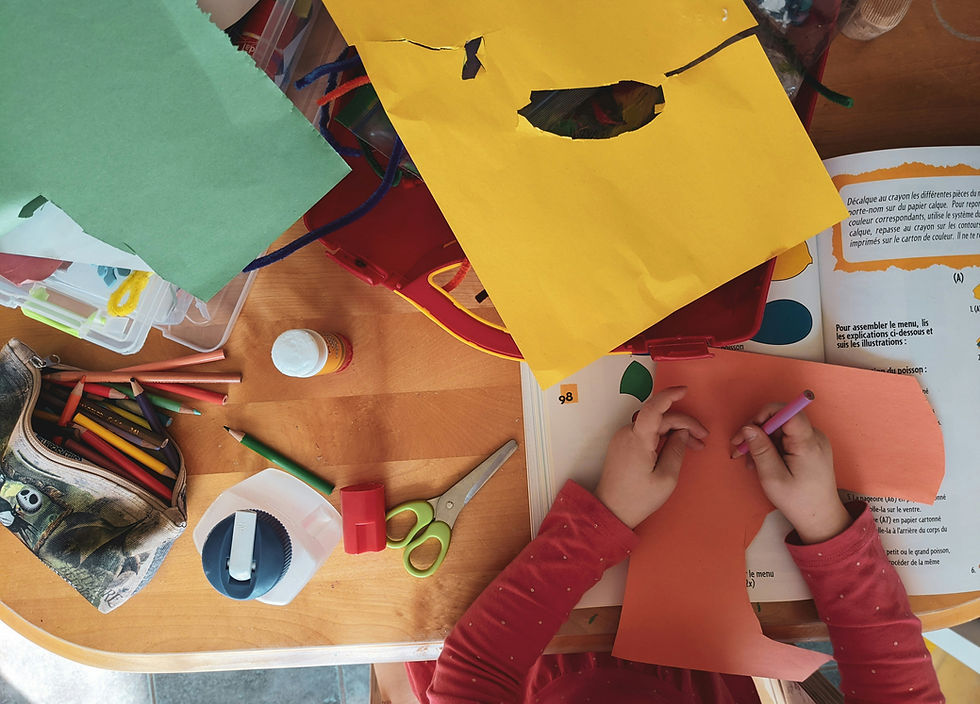A Parent Story
- Janis Russell
- Jul 18
- 4 min read
My daughter, Robyn, has dyslexia. She is the youngest of my eight homeschooled children. She is not my only child with a learning disability, but I chose to focus on her journey with the hope that it might be helpful to someone.
Robyn has always been a very confident child. Though she was the youngest of eight, she never let her older siblings push her around, and she usually had a logical argument for any situation. It wasn’t until she was 7 or 8 years old that her confidence took a blow. I already suspected she had dyslexia. Teaching her to read with a phonics program just didn’t work, though it does for most children. Because I taught her at home, I was able to focus on her academic strengths and teach her in ways that were comfortable. However, at this time in her life, the kids in the neighborhood and at church noticed that she couldn’t read like they could. They started making comments which shattered her confidence. They told her she must be stupid and dumb because she couldn’t read. I reassured her that she is smart in different ways than reading like everyone else. It was still pretty tough for her to accept that she couldn’t learn to read in a “normal” way.
Our family read scriptures together every night before bed. As we read scriptures at night, each of our children had a turn to read. I watched as Robyn would see familiar words and memorize them. That began to help her confidence grow.
I learned to identify more of her strengths and her weaknesses. Turns out, the problems she has with the alphabet she does not have with numbers. Numbers “stayed steady” in her brain, so she was pretty good at math. However, the act of penmanship was painful, so I would only occasionally have her write things with paper and pencil and mostly let her be free with dictating to the computer or someone else. Spelling was also difficult, but it was manageable if I would just let her spell things verbally. She could absorb almost any subject that somebody verbally explained to her. When I read to her, she had an incredibly long attention span. Later, when she was looking into taking the GED, she took some practice tests at the school district facility. The person testing her was shocked to see her reading comprehension score. She said, “It’s off the charts!” I bring this up, because as I taught all my children, I learned that success breeds success. If you let a child spend more time in the things that are their strengths, it will give them confidence that they can do well.
By the time she was in junior high, she got very serious about her future. At the time, she wanted to become a mechanical engineer and work with robotics. She knew that she needed to become better at reading. At this same time, we found out about a program called PACE. It was a program designed for children with learning disabilities, and it provided “brain training”. It seemed to be quite helpful. Also, at this time in her life, she joined a homeschool speech and debate league. She joined mock trial teams. These experiences helped her organize her thoughts. A side benefit which I truly appreciated was that she had great modeling of correct grammar and word usage with all these speeches! She could hear it, and it made sense.
She took some science and math classes at the local high school when she was a freshman. As I had meetings with the administration and staff to provide her with accommodations for her learning disability, I was shocked to learn that in the years between my university training to be a teacher and my youngest child’s entering high school, almost nothing had been done to provide for the needs of dyslexic children. Finally, the school accepted the test results from her PACE program. She was enrolled in one math class taught by a coach. He expected the students to take notes, and he spoke quickly. This completely overwhelmed her. We found another teacher who took a different approach. She sent videos to the students every night so they could stop and start the video as often as needed. They could learn the lesson on their own time. Then, the next day, she would work with any students that had questions about the lesson they went over the night before. This was a god-send! Robyn took math from her for 2 years and did well.
Robyn was incredibly stressed about taking the ACT test. For her last year of high school, she transferred to a charter school which taught classes for concurrent enrollment at UVU. She received UVU credit and was accepted to start on campus at UVU without taking the ACT, because she already had so much UVU credit. She later applied to BYU and was accepted. She is currently attending BYU and finishing her sophomore year as a psychology major, philosophy minor. She plans on attending law school after she finishes her bachelor’s degree.








Comments